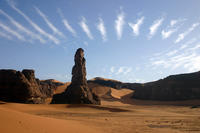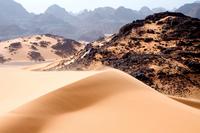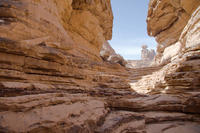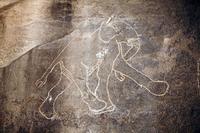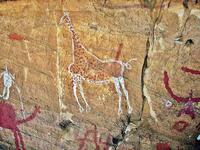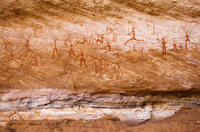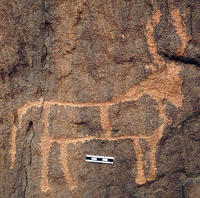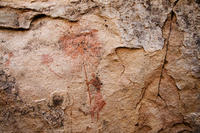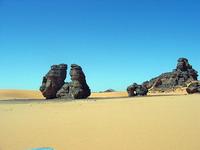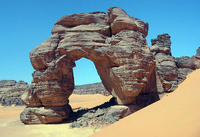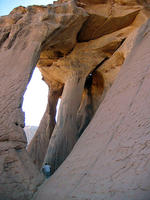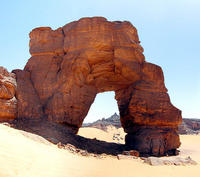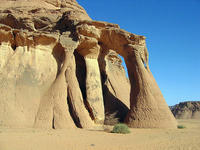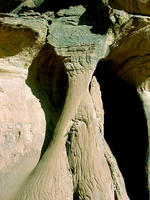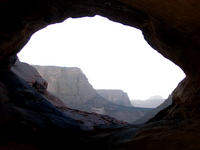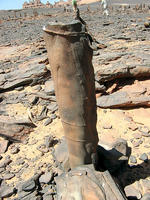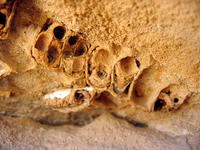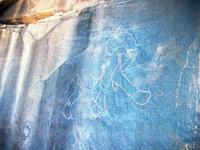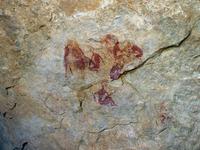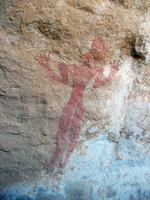You are in: Africa -> Libya -> Rock-Art Sites of Ta... , and traditional search or Image Gallery will yield results of this site only
Rock-Art Sites of Tadrart Acacus
| Site number: | 287 |
|
| Type of site: | Heritage in danger | |
| Date: | 12000 BC-100 AD | |
| Date of Inscription: | 1985 | |
| Location: | Africa, Libyan Arab Jamahiriya, Fezzan | |
Up to 75 images are shown here. Click on each for more details or on Image Gallery for more images.
| Description: | Bordering Algeria’s World Heritage site of Tassili N'Ajjer, this rocky massif holds thousands of variously styled cave paintings, dating from 12,000 B.C. to A.D. 100. They are a sign of the patent changes in the fauna and flora; they also indicate the various lifestyles of the succeeding communities within this Saharan region. --WHMNet paraphrase from the description at WHC Site, where additional information is available. | |
| Tadrart Acacus (Arabic: تدرارت عكاكس) is a desert area in western Libya and is part of the Sahara. It is situated close to the city Ghat and not far from the Algerian border. Tadrart means 'mountain' in the native language of the area. It has a particularly rich array of prehistoric rock art. The Acacus has a large variation of landscapes, from differently coloured sanddunes to arches, gorges, rocks and mountains. Major landmarks are the arches of Afzejare and Tin Khlega. Although this area is one of the most arid of the Sahara, there is vegetation, such as the callotropis plant. The area is known for its rock-art and was inscribed as a UNESCO World Heritage Site in 1985 because of the importance of these paintings and carvings. The paintings date from 12,000 BC to 100 AD and reflect cultural and natural changes in the area. There are paintings and carvings of animals such as giraffes, elephants, ostriches and camels, but also of men and horses. Men are depicted in various daily life situations, for example while making music and dancing. --Wikipedia. Text is available under the Creative Commons Attribution-ShareAlike License. | ||
| Source: | http://whc.unesco.org/en/list/287 | |
| Reference: | 1. UNESCO World Heritage Center, Site Page. | |


